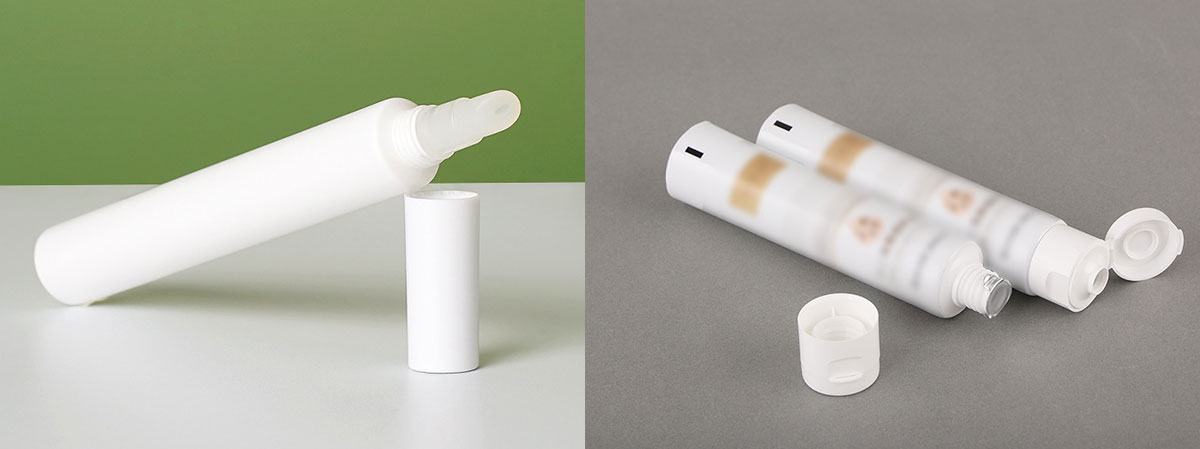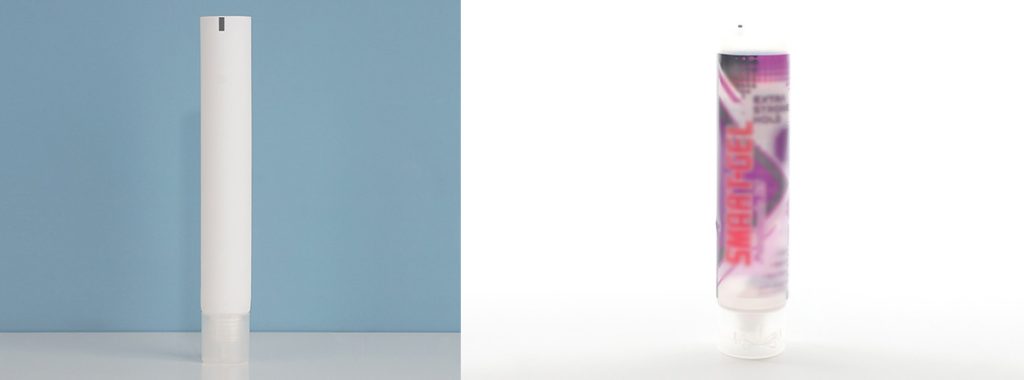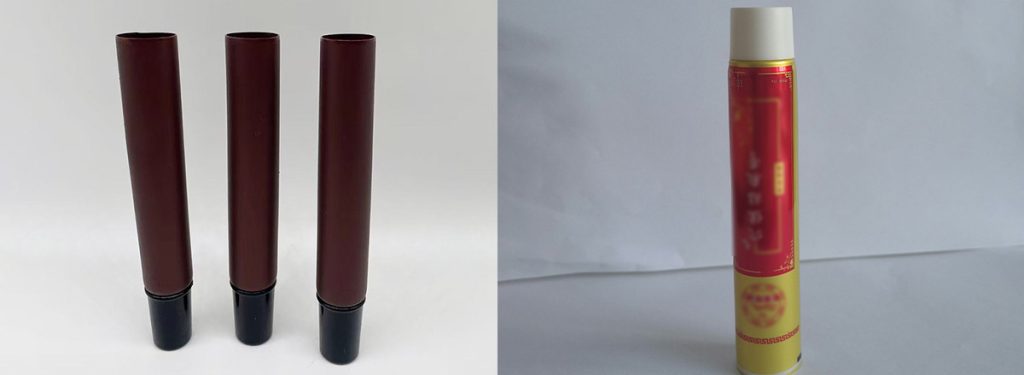

Global demand for innovative packaging solutions in lami tube production continues to rise. Manufacturers seek modular and upgradable designs to maintain efficiency and stay competitive. The market shows strong growth, with the laminate tube packaging valued at USD 2.68 billion in 2024. Market projections estimate an increase to USD 4.04 billion by 2032, reflecting a CAGR of 6.2%. Sustainability, smart designs, and expanding markets motivate companies to invest in advanced packaging technology. These factors drive the development of packaging that meets consumer expectations for durability, convenience, and environmental responsibility.
- Market value in 2024: USD 2.68 billion
- Projected value in 2032: USD 4.04 billion
- CAGR: 6.2%
Key Takeaways
- Modular design enhances scalability, allowing manufacturers to quickly adjust production levels based on market demand.
- Flexibility in modular systems enables quick adaptations to various tube specifications, reducing production timelines.
- Cost efficiency is achieved through standardization, allowing manufacturers to lower operating costs and improve return on investment.
- Sustainability is a key focus, with manufacturers adopting eco-friendly materials and processes to meet consumer expectations.
- Upgrading existing machines with modular components helps manufacturers maintain competitiveness and respond swiftly to market changes.
Modular Design Benefits
Scalability
Scalability stands as a core advantage of modular design in lami tube production. Manufacturers can expand or reduce their operations quickly to match market demand. Modular layouts enhance flexibility and operational efficiency. They allow for rapid scaling of production in response to market demands. Design standardization supports adjustments in production capacity without disrupting operations. Standardized parts simplify production processes. Economies of scale are achieved as the same modules can be used across different products. Reduced complexity in production increases overall output. Modular design enables quick scaling of production in response to demand. Independent production of modules simplifies increasing production volumes. Replicating or expanding product lines is easier with a modular approach.
Tip: Modular systems significantly improve the adaptability of lami tube production. Manufacturers respond swiftly to changes in market demand by adopting lean manufacturing techniques and utilizing modular filling systems. Companies streamline their production processes, cut costs, and foster innovation.
Flexibility
Flexibility in modular design allows manufacturers to configure production modules to meet diverse packaging requirements. The lami tube making machine adapts to various tube specifications and complex structures. This adaptability leads to reduced production timelines. Equipment compatibility with different laminated tube materials optimizes the thermal lamination process and ensures high-quality sealing performance. The Alltub manufacturing plant in Germany showcases the adaptability of modular laminate tube production. Investment in a class 8 clean room and advanced filtration technology meets high-quality standards for pharmaceutical and cosmetics products. The production process can be completed in as little as 48 hours from customer file to finished tube, highlighting rapid adaptability to new product requirements.
- Modular design allows for quick adjustments to accommodate different tube specifications.
- Reduces the need for extensive tooling changes, enhancing production flexibility.
- Incorporates quick-change systems and universal gripping solutions as standard features.
- Supports rapid capacity expansions and product line extensions, aligning with agile production strategies.
| Benefit | Description |
|---|---|
| Flexibility | Allows for flexible configuration of production modules. |
| Meeting Diverse Demands | Capable of meeting diverse production demands. |
Cost Efficiency
Cost efficiency remains a major benefit of modular design in lami tube production. Modular systems help reduce overall operating costs. Manufacturers achieve economies of scale by using the same modules across different packaging products. Standardization of modules and parts simplifies maintenance and reduces downtime. Companies can upgrade or replace individual modules without investing in entirely new lami tube making machines. This approach lowers capital expenditure and improves return on investment. Modular design also supports lean manufacturing, which minimizes waste and optimizes resource use.
| Benefit | Description |
|---|---|
| Cost Reduction | Helps in reducing the overall operating cost. |
Note: Modular design in laminated tube production line enables manufacturers to maintain cost efficiency while meeting high standards for packaging quality and safety.
Trends in Lami Tube Production
Sustainability
Sustainability shapes the future of lami tube production. Manufacturers now prioritize eco-friendly materials and processes to meet consumer expectations and regulatory standards. The industry sees a rapid shift toward recyclable and bio-based laminate materials, with Europe experiencing a 20% annual increase in demand. Companies invest in mono-material polyethylene tubes that maintain barrier properties while supporting recycling efforts. Many brands use post-consumer recycled content in their packaging, aligning with corporate sustainability goals.
Manufacturers also focus on reducing carbon footprints. They adopt energy-efficient design practices and low-emission manufacturing processes. Supply chain traceability ensures compliance with international sustainability standards. The use of less plastic in tube packaging and the development of tubes made from recycled materials reflect a commitment to environmental responsibility. These initiatives support the circular economy and ESG criteria, which drive transparency and sustainable practices across the industry.
| Aspect | Description |
|---|---|
| Eco-friendly Materials | Manufacturers are increasingly adopting recyclable and eco-friendly materials to meet consumer demands. |
| Innovative Designs | High-definition printing and unique designs enhance brand visibility and consumer engagement. |
| Cost-effectiveness | Lightweight properties of laminated tubes optimize logistics and transportation efficiency. |
Urbanization and a rising middle class, especially in the Asia-Pacific region, fuel market growth. Consumers prefer hygienic and aesthetically appealing packaging formats, which further accelerates the adoption of sustainable solutions.
Note: Sustainable materials and processes directly impact environmental performance metrics, driving market growth and brand loyalty.
Advanced Technology
Advanced technology transforms lami tube production by increasing efficiency and product quality. High-speed machines, such as the SAESA®500Line, produce up to 110 tubes per minute while occupying only 6m² of floor space. These machines feature advanced welding technology that eliminates hot-air preheating, resulting in high-quality welds at fast speeds. Human Machine Interface (HMI) systems allow for convenient operation and testing, while automatic failure warnings and non-stopping roll re-feeding minimize downtime.
Manufacturers use mechanical, electronic, and pneumatic technologies to automate production. This approach lowers investment costs and boosts productivity compared to traditional machines. Accurate rotary cutting positioning and quick mould changing times—ranging from 40 to 60 minutes—support flexible production runs.
Innovations such as snap-fit closures and flexographic printing further improve efficiency and product quality. Snap-fit joints speed up assembly and reduce the need for additional fastening materials, lowering production costs. These closures create secure, leak-proof seals, which are critical for certain packaging applications. Flexographic printing enables high-quality, detailed graphics, enhancing product appeal and branding.
| Feature | Description |
|---|---|
| Production Speed | 110 pieces per minute |
| Welding Technology | Advanced welding without hot-air preheating for high-quality welds at high speeds |
| Control System | HMI for convenient operation and testing |
| Assembly Speed | Snap-fit joints are quick to assemble, enhancing production speed. |
| Printing Quality | Flexographic printing allows for high-definition graphics and branding. |
Manufacturers increasingly adopt modular designs to support personalized packaging needs and short production runs. This flexibility allows brands to launch limited-edition or region-specific products, meeting diverse consumer demands.
Applications in Frozen Food Packaging
Market Demand

Frozen food packaging continues to evolve as consumer preferences shift. People seek convenience in their daily routines. Busy lifestyles and dual-income households drive the popularity of ready-to-eat meals and frozen fruits. Health consciousness also influences choices, with many consumers selecting frozen vegetables for their nutritional value. Companies respond by offering a wide range of frozen food packaging options that meet these needs.
- Convenience foods attract consumers with limited time.
- Health-focused buyers choose frozen fruits and vegetables for their diets.
- Sustainable and eco-friendly packaging gains traction due to environmental regulations and increased awareness.
Manufacturers recognize the importance of frozen food packaging that aligns with these trends. They invest in lami tube production to deliver solutions that satisfy both convenience and sustainability demands. The market for frozen food packaging grows as more people seek products that offer extended shelf life and maintain food safety.
Packaging Innovations
Innovations in frozen food packaging enhance food safety and product appeal. Lami tube production supports the creation of versatile and durable packaging formats. Companies use advanced materials to protect frozen foods from moisture, oxygen, and light. These materials help preserve freshness and prevent contamination.
| Material Type | Function |
|---|---|
| Polyethylene | Provides moisture barrier |
| Aluminum Foil | Blocks air and light |
| EVOH Copolymer | Resists oxygen and moisture |
Manufacturers design frozen food packaging to withstand low temperatures and rough handling during transport. The use of multi-layered structures ensures food safety by preventing spoilage and maintaining product integrity. Eco-friendly solutions, such as recyclable tubes, appeal to environmentally conscious consumers. Brands also incorporate high-quality graphics and easy-to-use closures to improve the consumer experience.
Frozen food packaging must meet strict food safety standards. Companies test packaging for durability and barrier performance. Lami tube production enables rapid adaptation to new market requirements, supporting the launch of innovative frozen food packaging formats. The versatility of these solutions allows manufacturers to address diverse needs, from single-serve portions to bulk packaging.
Tip: Selecting the right frozen food packaging materials and designs helps companies maintain food safety, extend shelf life, and attract consumers seeking convenience and sustainability.
Implementation Strategies
Upgrading Machines
Manufacturers who want to future-proof their packaging operations must adopt modular and upgradable systems. The process begins with a thorough assessment of current packaging equipment and production needs. They identify areas where modular upgrades can improve extrusion efficiency, energy efficiency, and sanitary design. Many companies choose to retrofit existing lami tube making machines with advanced modules. These modules often include automated quality inspection, leak detection, and digital controls. Upgrading packaging machines with these features increases reliability and supports regulatory compliance.
A practical approach involves the following steps:
- Evaluate Current Equipment
Companies review the performance of their packaging equipment. They check for bottlenecks in extrusion and blown film extrusion processes. They assess energy efficiency and sanitary design standards. - Select Modular Upgrades
Manufacturers choose modules that enhance packaging solutions. They focus on equipment that allows quick changeovers and flexible operation. They prioritize modules that support personalized packaging and small-batch production. - Integrate New Technology
Teams install new modules on existing lami tube making machines. They ensure compatibility with laminated tube production. Integration of digital controls and automated inspection systems improves safety and shelf life. - Train Workforce
Employees receive training on upgraded packaging equipment. They learn to operate new modules and maintain regulatory compliance. Training programs emphasize safety, energy efficiency, and sanitary design. - Monitor Performance
Companies track the impact of upgrades on packaging quality and shelf life. They measure improvements in extrusion speed, equipment reliability, and energy efficiency.
Tip: Upgrading packaging machines with modular components reduces downtime and increases production flexibility. Manufacturers can respond quickly to changes in market demand and regulatory requirements.
Overcoming Challenges
Implementing modular and upgradable systems in lami tube production presents several challenges. Manufacturers must address integration, maintenance, and ROI concerns to achieve successful adoption. The following table outlines common obstacles:
| Challenge | Description |
|---|---|
| Resistance to change | Change away from past processes is not well accepted, linked to a lack of productivity. |
| High overhead costs | Excessive burn rate of start-up cash due to high overhead costs can lead to financial issues. |
| Supply chain issues | Distances between manufacturing and project sites create procurement and delivery challenges. |
| Local building code issues | Local regulations can cause delays, interrupting production flow. |
| Workforce adaptation | The need for workforce adaptation to new processes can hinder implementation. |
Manufacturers can overcome these challenges by following several strategies:
- Invest in automation and advanced packaging technology.
- Choose equipment with flexible operation and quick changeovers.
- Integrate quality inspection, leak detection, and digital controls to enhance production efficiency and reliability.
- Develop training programs that help the workforce adapt to new packaging equipment and processes.
- Collaborate with suppliers to address supply chain issues and ensure timely delivery of extrusion modules and packaging machines.
- Work closely with local authorities to meet regulatory compliance and avoid delays related to building codes.
Note: Addressing these challenges ensures a smooth transition to modular and upgradable packaging solutions. Companies that invest in advanced equipment and workforce training achieve higher safety standards, longer shelf life, and improved energy efficiency.
Manufacturers who implement these strategies position themselves for long-term success in lami tube production. They maintain high standards for packaging quality, safety, and regulatory compliance. Modular upgrades to packaging equipment and extrusion systems support innovation and market growth.
Conclusion

Modular and upgradable design transforms lami tube production. Companies gain efficiency, sustainability, and adaptability. These systems help manufacturers respond to market changes and maintain high standards. The table below highlights key benefits:
| Benefit | Description |
|---|---|
| Quality Control | Stringent oversight at every stage ensures consistent product quality. |
| Sustainability | Resource-efficient processes reduce environmental impact. |
| Cost Efficiency | Lower labor and construction time leads to significant savings. |
| Scalability | Quick expansion supports growth without sacrificing quality. |
Manufacturers who invest in advanced solutions secure long-term success in a changing market.
FAQ
What Is Modular Design in Lami Tube Production?
Modular design uses interchangeable components in lami tube production. Manufacturers can add, remove, or upgrade modules to meet changing needs. This approach increases flexibility and supports efficient production.
Tip: Modular systems help companies adapt quickly to market changes.
How Does Upgradable Equipment Benefit Manufacturers?
Upgradable equipment allows manufacturers to improve existing machines without replacing them. They can add new features, boost efficiency, and reduce costs. This strategy supports long-term growth and keeps production lines competitive.
Why Is Sustainability Important in Lami Tube Packaging?
Sustainability reduces environmental impact and meets consumer expectations. Companies use recyclable materials and energy-efficient processes. These practices help brands build trust and comply with regulations.
| Benefit | Description |
|---|---|
| Eco-friendly | Reduces waste and pollution |
| Market appeal | Attracts conscious consumers |
Can Modular Systems Improve Production Speed?
Modular systems streamline workflows and reduce downtime. Manufacturers switch modules quickly to handle different products. This flexibility increases production speed and supports faster delivery.
What Challenges Do Companies Face When Upgrading Production Lines?
Companies may face high costs, resistance to change, and supply chain issues. They must train workers and ensure equipment compatibility. Addressing these challenges helps maintain smooth operations and achieve successful upgrades.
Note: Careful planning and workforce training support a successful transition.
